Beverly Gray's Blog: Beverly in Movieland, page 109
June 12, 2015
I’ll See You in My Dreams: Blythe Danner Finally Finds Stardom
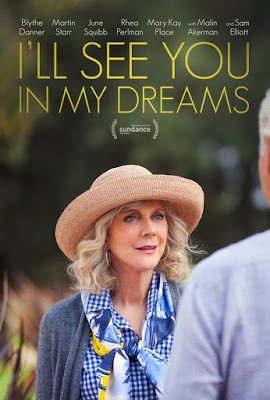
As a young girl with a literary bent, I was much aware of the talents of Blythe Danner. In the 1970s, on TV’s Great Performances, she glowed as Nina in Chekhov’s The Seagull and moved me deeply as Alma Winemuller in Tennessee Williams’ The Eccentricities of a Nightingale (a revision of the playwright’s Summer and Smoke). She also played the complicated Zelda Fitzgerald in a TV movie called F. Scott Fitzgerald and ‘The Last of the Belles.’ Some of her many ‘loving wife’ roles were in TV dramas about Lou Gehrig and George Armstrong Custer. And for one year she took on the part of Amanda Bonner (opposite Ken Howard) in a TV series based on the classic Hepburn/Tracy comedy of clashing lawyers, Adam’s Rib.
Despite all this prestigious television work, Blythe Danner never quite made it as a movie star. Her big break seemed to come in 1974, when Sidney Lumet cast her in the leading role of a beautiful and headstrong Texan who’s romanced over the decades by two rival farmers (Anthony Perkins and Beau Bridges) in Lovin’ Molly. Though the film was based on a novel by the great Larry McMurtry, it made nary a splash. Nor did most of Danner’s other movies. She had supporting parts in everything from The Great Santini to Future World to Sylvia, the somber Sylvia Plath biopic in which she played the mother of her real-life daughter, Gwyneth Paltrow. But she was little noticed by the movie-going public until she became Ben Stiller’s patrician mother-in-law (opposite a maniacal Robert De Niro) in the madcap Meet the Parents and its sequels.
Now at long last, Danner (a classy and still beautiful 72) is having her moment. The film is I’ll See You in My Dreams , a gentle romantic drama about Carol Petersen, a longtime widow who has finally decided to re-connect romantically with the opposite sex. Speed-dating proves a disaster, but she forms a warm relationship with a young pool cleaner and a hot one with Sam Elliott as an emphatically foxy white-haired free spirit. This is hardly a flick for the teen set, but greying Baby Boomers will surely be able to identify with retirement-age characters who are portrayed as intelligent, lively, and worthy of respect. One tiny moment in the film caught my eye: a photo on Carol’s mantelpiece shows her long-ago self with her curly-haired husband and blonde teenage daughter. I’d swear that’s an actual picture of Danner, her late spouse Bruce Paltrow (who died of cancer in 2002), and the young Gwyneth. (Yes, there’s a loving adult daughter who shows up briefly in the movie, but she’s played by the very blonde Malin Akerman.)
I interviewed Blythe Danner in 2004, when she was being honored—along with Gwyneth—with Women in Film’s Crystal Award. Our phone chat was a chance to tell her that I’d admired her on stage years earlier in the title role of George Bernard Shaw’s Major Barbara. As journalists know, it never hurts to start off by praising your interview subjects for their more obscure accomplishments. But I was being sincere: for me she was the complete embodiment of Shaw’s fascinating character. I also mentioned that I’d once rubbed shoulders with her when we were both shopping for baby gifts at an L.A. department store. I said I’d been tempted to speak to her then, but as a good Angeleno I didn’t want to intrude on the privacy of a celebrity. She quickly set me straight: she would have welcomed my attention.
May lovely things come to this lovely lady now.
Published on June 12, 2015 10:00
June 9, 2015
Washington Politicos and Hollywood Stars
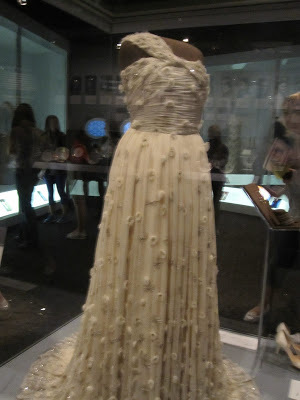 Michelle Obama's Inauguration Gown, 2008
Michelle Obama's Inauguration Gown, 2008It’s remarkable how often politics and movies intersect. American presidents, both fictional and real, have been featured in scores of movies. I can think of a half-dozen, at least, in which Abraham Lincoln is portrayed, often by award-winning actors like Henry Fonda, Raymond Massey, and Daniel Day-Lewis. Franklin D. Roosevelt, John F. Kennedy, Richard Nixon, a thinly disguised Bill Clinton (in Primary Colors), and George Bush (W.) have all had their moments – whether reverential or sardonic -- on the silver screen.
I hail from Southern California, the land of motion picture royalty. Now I’m newly returned from the city dedicated to American political royalty. Of course I mean Washington, D.C., where I went to participate in the sixth annual conference of the Biographers International Organization. What struck me in my rambles through our nation’s capital is the clear parallel between Washington’s political celebrities and the movie celebrities of my hometown.
Washington is a city of statuary, with every major president granted some sort of monument. In Hollywood there are far fewer statues, but the fame of our stars is preserved in other ways. Their names are emblazoned on buildings and street signs (e.g. the Kirk Douglas Theatre and West Hollywood’s Norma Place, honoring silent star Norma Talmadge). Celebrities’ autographed glossies are pinned up on walls everywhere: from dentists’ offices to delis to dry cleaning establishments. Then, of course, there’s the Hollywood Walk of Fame, where stars literally adorn the pavement.
In Washington, I took a long Saturday evening walk to the magnificent Lincoln Memorial. There sat Abe himself, nineteen feet high, looking down on me and on everyone else who had gathered at this spot. The first time I saw Paris, I visited the tomb of Napoleon, a place so silent and solemn that it felt like a cathedral. The Lincoln Memorial, by contrast, seems downright festive. At pretty much any hour, there are so many people – of all sizes, shapes, and colors – assembled here, many of them armed with cameras, that I was reminded of the crowds happily checking out the movie-star footprints at Grauman’s Chinese.
I also visited the Smithsonian’s National Museum of American History, where the inaugural gowns of past First Ladies are preserved as sacred relics. The reverence we feel toward these opulent frocks is not so far removed from how movie fans regard Marilyn Monroe’s white Seven Year Itch halter dress and Judy Garland’s Wizard of Oz blue-and-white checked pinafore. In fact, the “American Stories” display at the museum has as its focal point a pair of Garland’s dazzling ruby slippers, upon which fans gaze with awe.
One of my favorite Washington museums is the National Portrait Gallery, where famous Americans of every stripe are honored. Yes, many of the exhibits are devoted to historical figures, and one of the museum’s most famous sections is the Hall of the Presidents. That’s where you can find each president’s official portrait, painted by an artist of his own choosing. These are mostly flattering works, making each chief of state look movie-star handsome. A case in point is the Norman Rockwell rendition of an idealized Richard Nixon. Then there’s Ronald Reagan, who truly embodied the intersection of movie star and president because, of course, he was both.
But the National Portrait Gallery collects depictions of movie stars too. Among the recent acquisitions is a glamorous photo of Gary Cooper. Also recently purchased are images of film composer Marvin Hamlisch, choreographer Busby Berkeley, the Jackson Five, and a distinctive Milton Glaser homage to comedian/activist Dick Gregory. It’s reassuring, somehow, to see that showbiz stars are stars in Washington too.
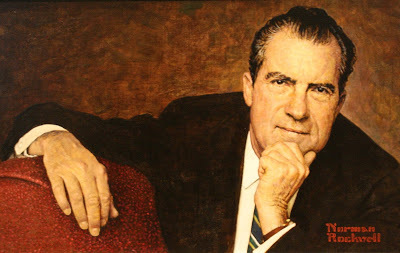
Published on June 09, 2015 13:49
June 5, 2015
Call Me Ishmael . . . er . . . Caitlyn
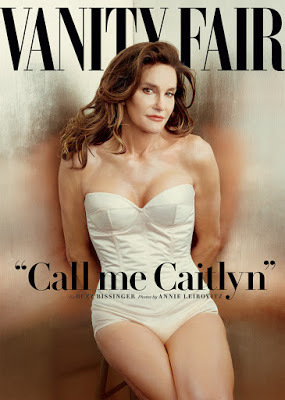
I heard about the Vanity Fair coming-out photo of Caitlyn Jenner before I saw it. On my favorite NPR station, I had listened to media expert Howard Bragman, the Hollywood P.R. maven who once handled the transition of Chastity Bono into Chaz, praise the savvy with which Jenner and her team have managed a very public transition from male to female. Bragman, who is not on Jenner’s payroll, noted the careful step-by-step nature of her unveiling, from the confessional TV interview with Diane Sawyer to the eye-catching new Vanity Fair cover shot by Annie Leibovitz. For me Bragman’s best moment came when he noted the former Bruce Jenner’s aw-shucks image. In Bragman’s eyes, Jenner’s famous boy-next-door sincerity has always had an element of calculation. Bragman applied a terrific term that’s apparently common in Hollywood P.R. circles for someone whose ingenuousness is a bit of a performance: “faux-shucks.”
Well, yes. When you’re a member by marriage of the Kardashian clan, generating publicity is all part of the game. So is being true to your own branding. I’m actually impressed that Caitlyn chose to dodge a Kardashian family tradition by not spelling her new name with a K, to better fit in with mama Kris, as well as Kim, Kourtney, Khloé, and their half-sisters Kendall and Kylie Jenner. It doesn’t surprise me at all to learn that, as a spin-off of Keeping Up with the Kardashians, Caitlyn will soon be the star of her own eight-part cable reality series, following her through a transition that has included such things as multiple hours of facial-feminization surgery.
Then there’s that cover photo, the one with the Rita Hepburn hair, the Betty Grable swimsuit, and the Marilyn Monroe come-hither look. The retro-glamour of the shot was certainly designed to provoke maximum attention. In fact, on the day of Vanity Fair’s release, art critic Christopher Knight’s front-page article in the Los Angeles Times focused exclusively on the implications of Annie Leibovitz’s aesthetic choices. Knight was disappointed that Leibowitz, who has shot many a symbolically charged magazine cover and whose own sexuality is obviously complex, muffed an opportunity to say something really new about gender. In Knight’s words, “Leibovitz’s Caitlyn Jenner is a newfangled Vargas girl, one of those airbrushed cuties from the old pages of Playboy. Is that all there is?”
It just so happens that I’m starting to feel surrounded by transgender people, both at social gatherings and within my family circle. It’s clearly a tough road to travel, and I have nothing but good wishes for all those who feel they’ve been born into the wrong gender classification and decide to do something about it. By coincidence, on the day the Caitlyn cover appeared I had just read the last pages of Jennifer Finney Boylan’s second (of three) memoirs, I’m Looking Through You. Jenny appeared on a memoir panel at the 2015 conference of the American Society of Journalists and Authors. She and fellow panelists Darin Strauss ( Half a Life ) and Lizzie Stark (Pandora’s DNA) made a fascinating point about privacy. Each of these three had revealed through a published memoir their deepest, darkest secret. It’s therapeutic, of course, to get something out of your system. But if you effectively share with the world the private thing that’s haunting you, you might well end up building your reputation on exactly that secret you once desperately tried to conceal.
Caitlyn Jenner—gold medalist, actor, Kardashian—can’t exactly hide. And so I can only applaud her for using her celebrity status to shine a spotlight on her once-hidden self in such a dramatic way.
Published on June 05, 2015 11:30
June 2, 2015
“San Andreas” and Other Faults

There was an earthquake at the box office over the weekend. San Andreas, the disaster epic about a massive tremor that crumples most of the California coast, exceeded its makers’ expectations by taking in a healthy $53 million at the box office in its opening weekend. I’m told the film’s SFX are stellar, but the rock upon which San Andreas was founded is the hard-bodied Dwayne Johnson, who gives some silly doings a welcome gravitas.
That’s how they make disaster movies, big-budget-style. (San Andreas was co-produced by Warner Bros. and Village Roadshow, reportedly on a budget of $110 million.) Back in my Roger Corman days, we were much further down on the Richter scale, so to speak. Yes, we imitated the majors by releasing movies about man-eating fish (Piranha), natural disasters (Avalanche), and dinosaurs running amok in the modern world (Carnosaur). Given our tiny budgets and short production schedules, we could count neither on state-of-the-art special effects nor on star power. But that didn’t stop us from trying.
Roger Corman, my boss at Concorde-New Horizons, particularly liked the idea of films that were, as he invariably put it, “ripped from the headlines.” Back in the early days, immediately after the Soviet Union’s launch of Sputnik, Roger gathered his forces and whipped out a scientifically goofy but exciting drive-in flick called War of the Satellites. That was well before my time. But I remember what happened when the military dictator Manuel Noriega was removed from power in 1989, following the U.S.-led invasion of Panama. For the briefest of moments, Noriega escaped his captors. Roger was delighted, envisioning an action thriller called The Hunt for Noriega. He hired a writer to crank out a suitable script over the weekend. Unfortunately, Noriega was quickly caught, and that project unceremoniously ended.
Then there was the 6.9 Loma Prieta earthquake, which did much damage in the San Francisco area that same year, famously crippling the Oakland Bay Bridge. As soon as the earth stopped shaking, Roger dispatched a camera crew to capture real-life footage of the rubble. He let it be known in the press that his new movie, Aftershock, would present the cold, hard truth of what had happened. Then, of course, we needed a writer. Since I was Roger’s story editor, I was charged with finding a hot young author who could follow the John Sayles route of moving from prose fiction into screenwriting. My discovery, Madison Smartt Bell, was an award-winner who’d written a story about a film editor and was eager to plunge into the business of moviemaking. He met with Roger, who directed him to focus his script on the infrastructure failures that made that Loma Prieta quake so devastating. Madison dutifully did as instructed, making his main character (if memory serves) a whistleblowing building inspector. But then Roger, predictably unpredictable, decided this scenario was boring. After all the work I’d put into hammering out a deal with Madison, he was suddenly ousted. (Don’t cry for him: he’s been a National Book Award finalist for a novel about the Haitian revolution, All Souls’ Rising, and has otherwise had a great career. We’re still occasionally in touch.)
Meanwhile, Roger’s new idea was to edit his earthquake-rubble footage into the story of a young woman incarcerated by a madman, à la The Collector. The title became Quake, and my buddy Louis Morneau directed Steve Railsback as the local crazy who takes advantage of post-earthquake chaos to prey upon his beautiful victim. That real-life footage? It was deemed not terribly effective, and was barely used at all.
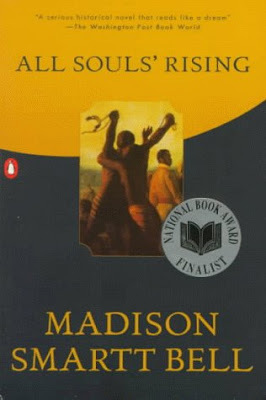
Published on June 02, 2015 12:08
May 29, 2015
The Beautiful (and Ageless) Carmen de Lavallade
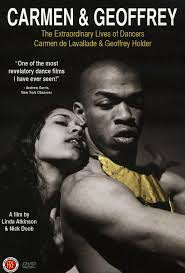 When I was four years old, long before I knew anything about movie stars, my idol was my first dance teacher. It was only natural. Carmen de Lavallade was tall, slim, and a beautiful café au lait color. She had a sweet smile and a gentle soul. And she moved like a dream.
When I was four years old, long before I knew anything about movie stars, my idol was my first dance teacher. It was only natural. Carmen de Lavallade was tall, slim, and a beautiful café au lait color. She had a sweet smile and a gentle soul. And she moved like a dream. I wasn’t her only admirer, needless to say. At Lester Horton’s Dance Theater, a bravely multicultural venue on Melrose Avenue in West Hollywood, she was a star. And stardom of course meant eventually heading for the bright lights of New York City. In 1954 she left her native Los Angeles, along with future choreographer Alvin Ailey. Soon the two were dancing on Broadway in the premiere of a fabled Harold Arlen-Truman Capote musical, House of Flowers. That’s where she met dancer-actor-director-choreographer-designer Geoffrey Holder, still remembered by many as the Uncola Man. They were married in a vibrant Caribbean ceremony much documented in the black press of the era. And they remained married until Holder’s passing last October, at the age of 84.
Through the years, my family kept in touch with Carmen. We greeted her backstage after L.A. performances. My parents saw her dance in Las Vegas, and later we watched for her in movies. (Among her screen roles is a small but vivid part in John Sayles’ Lone Star.) When I wrote articles about Lester Horton, I knew I could phone her for a few heartfelt quotes. After I published in the Los Angeles Times a piece about how Dance Theater had taught a small girl to be colorblind, she called to express her thanks.
But I could never have imagined the experience I’ve just had: sitting down with Carmen in a New York café for a few hours of comfortable girl-talk. I’m happy to say that she’s still elegantly beautiful, and still deeply involved in things artistic. No, she doesn’t exactly dance these days: at age 84, “I don’t call it dance, I call it movement.” But she’s just launched a one-woman show chronicling the three phases of her career. There were the L.A. years, of course, as well as the time she’s spent in New York, and also an unforgettable ten-year period when she taught stage movement at Yale Repertory Theatre, under the legendary Robert Brustein. Her students in that era were such future stars as Meryl Streep and Sigourney Weaver. While at Yale, she learned to augment her dance training with a thorough understanding of the actor’s craft.
Since then she’s had modest but significant stage roles. She played the Mexican flower-seller in a revival of A Streetcar Named Desire that (alas) raised some hackles because it cast black actors in the central roles. We chatted frankly about skin color: curiously, as a light- skinned African- American, she often finds herself chosen for Hispanic roles. Not long ago, she played a foul-mouthed Puerto Rican abuela: I was thoroughly tickled when she demonstrated this very flamboyant, and un-Carmen-like, voice.
We also talked more personally, about the pain of Geoffrey Holder’s last days. He was a man who reveled in color. While wasting away, in the aftermath of a broken femur, he was still able to do paintings of brilliant hue. I was moved to learn that at the service held in his memory, somber shades were banished. Mourners attended wearing all the colors of the rainbow.
It must be tragically hard to lose your husband of almost sixty years. At Dance Theater, I remember an expression: “Make a fall into a dance.” Carmen, I think, has done so – and done it beautifully.
Here’s a small sample of Carmen’s enduring performance skills. She can also be seen dancing (or moving) to Stephen Sondheim’s “Children and Art” on a recent app called Dances for an iPhone. I’m also posting a recent snapshot, as well as a photo of myself at age 4 as Carmen’s student. Yes, that’s me, jumping into a hoop as she watches.
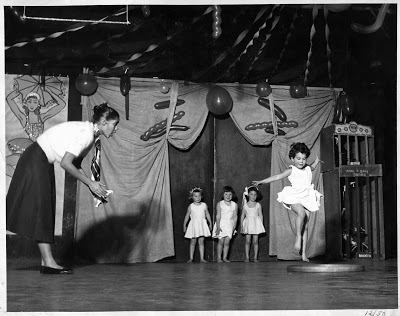

Published on May 29, 2015 11:13
May 26, 2015
Two Beautiful Minds: A Tribute to John and Alicia Nash
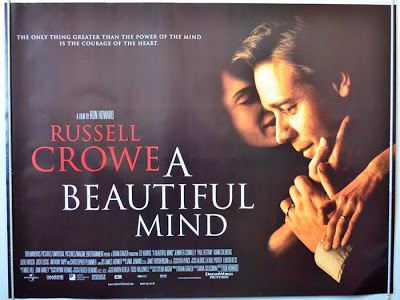
Yesterday morning I was startled by the news that John Nash, age 86, had been killed in a taxi crash on the New Jersey turnpike. It was a strange, violent end to a life that had contained more than its share of strangeness. Nash was the mathematical genius whose academic career was derailed by decades of schizophrenia. He once declined a plum faculty appointment, saying he was about to be named Emperor of Antarctia, and for years Princeton students remembered him wandering their ivy-covered halls, scribbling gibberish. Miraculously, Nash recuperated. He went on to win the 1994 Nobel Prize in economics for his contributions to the science of game theory.
Riding with John Nash in that fatal taxicab was his wife, Alicia, age 82. I’m moved by the fact that John and Alicia died together. Those who know their story, as depicted by Sylvia Nasr in a 1999 biography that became an Oscar-winning Hollywood film, understand how important their relationship was to John’s recovery.
When A Beautiful Mind was adapted from page to screen, various inventive cinematic shortcuts were taken. Screenwriter Akiva Goldsman, whose parents were pioneers in the field of child psychology, had literally grown up side by side with youngsters suffering from schizophrenic delusions. Goldsman chose to use Nasar’s prizewinning biography as a point of departure, reasoning that “within this perfectly detailed exterior life, I could build an inner life, and in so doing give the audience a window into what it might feel like to suffer from this disease.” That’s why he devised a plan to trick the film audience into accepting as real the delusional world of the mentally ill.
For movie purposes, time also had to be compressed. That’s why a key period in the Nash marriage was elided. The movie shows an overwrought Alicia walking out on an ailing John, but then returning soon thereafter. In reality she divorced him in 1963, but took him back in 1970 when he had nowhere else to go. The two remained a devoted couple, remarrying in 2001. Director Ron Howard, who finally put his Opie image to rest when A Beautiful Mind was released in 2001, was particularly attracted to the “really compelling adult love story” within Goldsman’s screenplay.Howard has insisted, “This is the kind of love that lives are built on. And in this particular case I think a life was saved by it.” One of his proudest moments as a director is the scene in which Jennifer Connelly (as Alicia) expresses to Russell Crowe (as John), simply but powerfully, her need to believe in the power of love to overcome all obstacles.
Howard passed many sleepless nights while making this challenging film. Still, he was quite willing to face the pressure of having the real John and Alicia Nash visit his set. From his brief conversations with Nash, Russell Crowe was able to glean mannerisms, some dialogue snippets, and ideas about how to integrate Nash’s own puckish sense of humor into the film. Howard himself went so far as to invite Nash to be videotaped while explaining the findings that had helped him earn his Nobel Prize. Watching Nash at the blackboard, Howard discovered a seventy-three-year-old man who was “really vibrant, really alive, interested,” a far cry from the more guarded figure with whom he’d chatted earlier. Nash’s zest for life made Howard appreciate more fully “the miracle of his recovery.” He was also deeply moved by Alicia Nash, saying that the script of A Beautiful Mind “continued to evolve and grow as I got to know the strength of this woman.”
RIP John and Alicia Nash. And a sad farewell to the invaluable Eric Caidin, B-movie lover and proprietor of the Hollywood Book & Poster Company. Appropriately, he was fatally stricken in Palm Springs, while attending a Film Noir convention. Here’s his L.A. Times obit.
Published on May 26, 2015 12:45
May 22, 2015
Lest We Forget on Memorial Day: Paths of Glory Lead But to the Grave
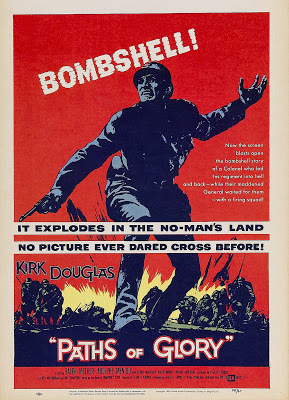
A trivia quiz for Memorial Day Weekend: what epic film was Stanley Kubrick’s first directorial project for Kirk Douglas’s company, Bryna Productions? No, it wasn’t Spartacus. Three years earlier, in 1957, Kubrick and Douglas worked together on Paths of Glory. This World War I drama, based on a novel by Humphrey Cobb, makes a strong case for the insanity of war. That’s why it strikes me as the perfect film to discuss as we approach Memorial Day. (If you haven’t seen it, prepare for spoilers in the paragraphs ahead.)
In 1935, when Cobb first wrote his novel, it had no title. Apparently the publishers held a contest, and the winning entry hearkened back to a line in a famous eighteenth-century poem. “Elegy Written in a Country Churchyard,” was written by Englishman Thomas Gray (whom I can assure you is no relation). Reflecting on how all riches and honors are transient, the poet wrote, “The paths of glory lead but the the grave.” It’s a gloomy thought, but one that perfectly exemplifies the mood of Kubrick’s film, which trades on the public’s memory of two very recent World Wars.
The main characters in the film are all French, as hinted by a discordant version of “La Marseillaise” that plays over the opening credits. As the drama begins, high-ranking French officers confer amid the splendor of a captured German palace. Brigadier General Mireau is being asked by his superior to send his war-weary troops on a dangerous mission, without adequate munitions and reinforcements. Mireau resists, but not for long, when it becomes clear that his own advancement in the ranks will be tied to the success of his soldiers in recapturing the “ant-hill” from the Germans. We soon see him strolling through the trenches, expecting to find only men of high morale. When one over-stressed soldier babbles about the possibility of dying, Mireau snaps, “There is no such thing as shellshock.”
The infantrymen’s number-one champion is Colonel Dax (Kirk Douglas), in peacetime a highly-[placed attorney. He bravely speaks up on the men’s behalf, but to no avail. Soon Dax is faced with the biggest trial of his life. Furious that his troops have not succeeded (despite impossible odds) on the battlefield, Mireau demands that hundreds of them be executed for insubordination and cowardice. Ultimately he settles for the prosecution of three men, one selected from each battalion. It is Dax’s unhappy task to defend these three before a military tribunal, at which their lives hang in the balance. I will not go into detail about the film’s powerful climax. Suffice it to say that Mireau is convinced that it’s a boon to troop morale when men see their fellow soldiers die.
The film’s distinctive ending accompanies these troops to a saloon, where they blow off steam with alcohol and noisy camaraderie. When the saloon-keeper brings forth a pretty young German prisoner of war to shyly serenade the men with a sentimental folksong, they respond with catcalls and crude remarks. Then the nostalgia behind the song gets the better of them, and they fall silent. It’s just a matter of time, we know, before they’re back on the field of battle, from which some will never return.
There is, though, at least one happy ending connected with Paths of Glory. That young German actress, Christiane Harlan (billed as Susanne Christian), became Stanley Kubrick’s third wife, and they remained together until his death in 1999. And the film itself was selected in 1992 by the Library of Congress for preservation within the National Film Registry.
I wish a meaningful Memorial Day to you all.
Published on May 22, 2015 12:23
May 19, 2015
Tough Gals and Tuneful Gals: Furiosa Meets Bathsheba Everdene
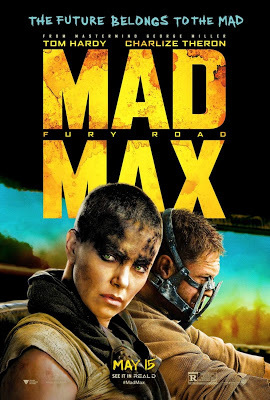 Surprise! Over the weekend, Mad Max: Fury Road took in $44.4 million on North American screens. This long-awaited reboot of George Miller’s famous post-apocalyptic franchise has earned big love from critics, and its handling of Charlize Theron’s Furiosa character has sparked spirited conversations about gender issues. The surprise, though, is that Mad Max was bested at the box office by the sequel to a low-budget musical comedy about an all-female a cappella group. Yes, Pitch Perfect 2, made for a relatively modest $29 million, scored $70.3 million in ticket sales this past weekend. That’s really something to sing about.
Surprise! Over the weekend, Mad Max: Fury Road took in $44.4 million on North American screens. This long-awaited reboot of George Miller’s famous post-apocalyptic franchise has earned big love from critics, and its handling of Charlize Theron’s Furiosa character has sparked spirited conversations about gender issues. The surprise, though, is that Mad Max was bested at the box office by the sequel to a low-budget musical comedy about an all-female a cappella group. Yes, Pitch Perfect 2, made for a relatively modest $29 million, scored $70.3 million in ticket sales this past weekend. That’s really something to sing about.I certainly would have put my money on Mad Max. Back in my Roger Corman days, we all learned from the example of the original Mad Max and especially its 1981 sequel, The Road Warrior. This rough-and-tumble epic, shot in the barren wastes of the Australian outback, offered loads of opportunities for blood-and-guts action without the expense of elaborate sets and costume design. Inspired by The Road Warrior, we at Concorde-New Horizons shot post-nuclear melodramas wherever in the world we could find broken-down vehicles and some picturesque squalor. That meant Peru, the Philippines, the shabbier parts of L.A., and wherever Roger had a business deal going.
One of the distinctive features of George Miller’s new Mad Max is its focus on a woman warrior, played with fierce but balletic intensity by a shaven-headed Charlize Theron. There are other women in key roles too. Though they’ve been badly treated by the men in their world, they are all brave and tough customers, who refuse to play the victim. Again, I can’t help thinking about my Corman years, when tales of strong women were the norm. The late Lana Clarkson as Barbarian Queen? And, especially, Pam Grier in gritty prison dramas like The Big Bird Cage? You couldn’t get much tougher than that.
But of course this week’s box-office leader, Pitch Perfect 2, is in its own way female-centric as well. Not only does it deal with a close-knit group of feisty women, led by Anna Kendrick and Rebel Wilson, but it was directed by a woman, Elizabeth Banks. So it’s nice to think that female power is on the rise at the movies, though the very rarity of women directors in Hollywood makes this an iffy proposition indeed.
One more surprise on this week’s top-of-the-box-office list: in the #10 slot is the new screen version of Thomas Hardy’s classic novel, Far From the Madding Crowd. Written back in 1874, it was a wild success in Victorian England. And no wonder, because it’s chockfull of romantic drama, set against the picturesque British countryside. At the center of all the plot entanglements is a beautiful, smart, and headstrong young woman, Bathsheba Everdene. She has three suitors: a sturdy young farmer; a wealthy but lonely landowner; and a dashing young soldier. Hardy’s novel was first filmed as far back as 1915. I saw John Schlesinger’s sumptuous 1967 screen adaptation, starring Julie Christie along with Alan Bates, Peter Finch, and the decidedly sexy Terence Stamp, and have never quite gotten it out of my system. In the Sixties, as feminism was taking hold, Christie’s Bathsheba struck me as truly a woman to remember. The very appealing Carey Mulligan heads the new cast, and I wonder whether she too will make an indelible impression.
In any case, Bathsheba Everdene lives on in one interesting sense. Author Suzanne Collins has given a version of her last name to Katniss Everdeen, who of course is the heroic leading character in another series of tough girl-power films, The Hunger Games.
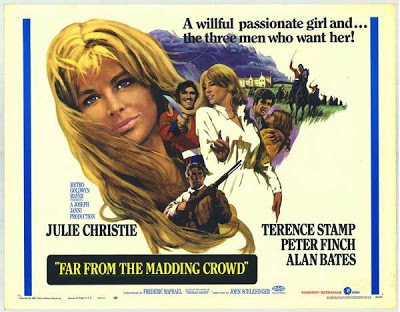
Published on May 19, 2015 12:31
May 15, 2015
Deflate-Gate, Hollywood-Style
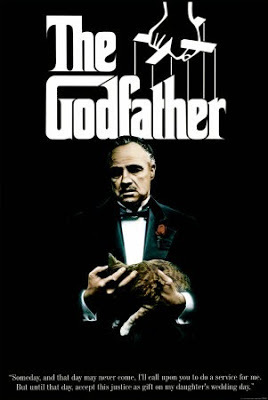
In the world of sports, the big story right now is “Deflate-Gate.” The strong probability that footballs were illegally deflated in an NFL playoff game at the behest of Tom Brady and the New England Patriots has now resulted in some stiff penalties, not to mention major embarrassment. Hollywood, by contrast, has never been accused of deflating anything. Instead, daily life in the movie capital can fairly be called “Inflate-Gate.” Many starlets, for one thing, still feel they’ll have a better chance of success if they buy themselves a bigger set of bazooms. And then there’s something that goes on daily, the constant scramble to give oneself sole credit for accomplishments that more fairly belong to a group.
In my Roger Corman years, I saw this tendency all around me. (Yes, the breast implants along with the insistence on taking credit where credit was not due.) Today Roger happily congratulates himself for adding the dark humor to the cult classic, Death Race 2000. Back in 1975, however, he fought hard to remove director Paul Bartel’s comic touches from the finished film. Yet Roger is not alone in taking a solo bow for the accomplishments of others. A fascinating 2008 documentary called Every Little Step is a behind-the-scenes look at the staging of a classic Broadway musical, A Chorus Line. Composer Marvin Hamlisch is shown discussing how the comic thrust of one of the show’s songs was lost on the audience until, during out-of-town tryouts, a key adjustment was made to its title. Hearing Hamlisch tell this amusing story, it’s easy to assume he wrote the song’s words as well as its music. Never once does he stop to acknowledge the show’s gifted lyricist, Edward Kleban.
Producer Robert Evans, the 1970s “boy wonder” of Paramount, has never been accused of false modesty. His rollicking memoir, The Kid Stays in the Picture, makes clear his contributions to such major hits as Rosemary’s Baby, Love Story, The Godfather, and Chinatown. But part of Evans’ charm is that he owns up to his failings as readily as his triumphs. There’s one moment when he goes far out of his way to recognize the contribution of an underling. When principal photography on The Godfather was in the can, it was apparently discovered that the film had no real ending. That’s when “Peter Zinner, one of the film’s two editors, took the task upon himself. He choreographed mayhem with religion, intercut murder with the baptism of Michael Corleone’s newborn child. He saved the day—he saved our ass!” Evans clearly sees the irony: “Coppola went on to become the decade’s maestro, Evans its boy genius . . . but Peter Zinner—who? He silently disappeared, looking for a new gig—saving another producer’s or director’s ass.”
Despite the preening of many producers, directors, and stars, filmmaking is a collaborative effort, toward which everyone’s contribution counts. But, inevitably someone gets overlooked. In 1964 the late Paul Almond directed Seven Up, a documentary that intimately explored the lives of fourteen British schoolchildren. The Up series has continued into the present, returning at seven-year intervals to interview the same subjects. But though Almond conceived the concept, it is his successor, Michael Apted, who now gets the accolades.
Then there’s Sesame Street’s Big Bird. He’s long been a beloved icon, but how many know the name of Caroll Spinney, the man beneath the feathers? This oversight was rectified last year by a documentary called I Am Big Bird: The Caroll Spinney Story . And Spinney’s hilarious Birdman parody, a YouTube hit, helps give credit where credit is surely due.
Published on May 15, 2015 11:27
May 12, 2015
“Clouds of Sils Maria”: Cloudy, with a Chance of Cataclysms
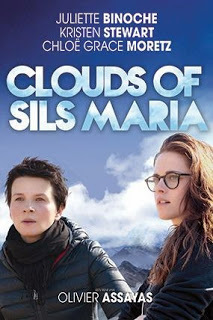
An acclaimed middle-aged actress at the height of her powers. An eager young up-and-comer, full of praise for her inspirational elder. Sound like All About Eve? Yes—and emphatically no. That’s part of the appeal of the 2014 French-German-Swiss co-production, Clouds of Sils Maria, that is just now appearing on American screens. This Olivier Assayas film, much admired at Cannes and elsewhere, does a marvelous job of foiling our expectations.
At the heart of Cloud of Sils Maria is the luminous Juliette Binoche, now at the mid-century mark but still ravishingly beautiful. As Maria Enders, she’s a revered icon of stage and screen, much sought after for glamour shoots, personal appearances, and prestigious new roles. She’s also negotiating a divorce, grieving the loss of an early mentor, and trying to decide what kind of future she wants. The big issue facing her is whether to accept a part in a revival of something called Maloja Snake. Years before, as an unknown, she’d shot to stardom in the same play. She had then played Sigrid, a mysterious and powerful young woman who set her sights on her straitlaced employer, Helena. Now she’s being asked to take on the role of Helena, whose passionate capitulation to Sigrid ends up destroying her life.
Partly this film is exploring what it means to be an actor. Maria—sensitive and riddled with insecurity—is a genius at camouflaging her emotions when she meets the press, the public, or virtually anyone beyond her ever-present personal assistant. She’s a thoroughly likable creature: she has a wonderfully hearty laugh, and her moments of private fun (like a giggle-fit over a corny sci-fi epic and a spontaneous skinny-dip in a mountain lake) are certainly contagious. Never does she take herself and her fame wholly seriously: clearly, it’s hard work keeping up that facade. By the same token, she makes us see that to be an actor is necessarily to be self-absorbed. She will never look very far beyond herself, and perhaps that’s why she has been so successful in her career path. But is her private life a success? That’s another question.
The striking young actress who will take on the role that once made Maria famous is played by Chloë Grace Moretz. Remarkably, Moretz (born in 1997) is still a teenager, but one who’s taken on her share of mature, gutsy roles (though she also convincingly played an adorable French gamine in Scorsese’s Hugo). In Clouds of Sils Maria, portraying a youthful actress known as much for her transgressive behavior as her talent, she is a brash and fascinating presence. But Maria’s real opposite number within the world of this film is her assistant, played by Kristen Stewart. Stewart’s impact on The Clouds of Sils Maria is such that she was recently given France’s César award for best supporting actress, the first American woman to be so honored. The film’s very first shots are of this earnest young woman, with her huge round glasses and ugly tattoos, dextrously putting out fires for her boss. Devoted and smart, she seems to have no personal ambition beyond serving as Maria’s factotum, sometimes advisor, and confidante What small hints we have of a personal life are not encouraging. But finally she remains a mystery. And this mystery is magnified by something that happens late in the film. I won’t spoil it, but it raised questions I am still trying to unravel.
This then, is not a movie that ends when the lights come on. As one who loves movies about complicated people, I’m happy to give it my thumbs-up.
Published on May 12, 2015 11:44
Beverly in Movieland
I write twice weekly, covering topics relating to movies, moviemaking, and growing up Hollywood-adjacent. I believe that movies can change lives, and I'm always happy to hear from readers who'd like t
I write twice weekly, covering topics relating to movies, moviemaking, and growing up Hollywood-adjacent. I believe that movies can change lives, and I'm always happy to hear from readers who'd like to discuss that point.
...more
- Beverly Gray's profile
- 10 followers



